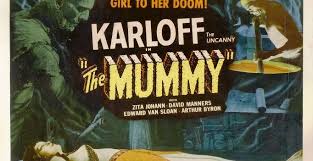The Mummy (1932)
IMDb meta-data is runtime of 1 hour and 13 minutes, rated 7.1 by 21,656 cinematizens.
Gerne: Horror
Verdict: Masterpiece
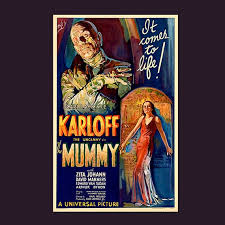
A ruminative tale of undying love perfectly directed by Karl Freund, a cinematographer who conveys meaning, emotion, and conviction through lighting, silence, and stasis. No strange camera angles, framed shots, or cross cuts. The titular Mummy is never seen entire. This film has nothing to do with the host of derivative imitators that followed.
While mummies (but not daddies) had a prior history in a novel by Bram Stoker and a 1918 silent film by Ernst Lubitsch, it was only after Howard Carter found Tutankhamun’s tomb in 1922 that the Egyptian craze occurred, and with it Mummies went big. There is a recent episode of Lord Bragg’s podcast on In Our Time about this finding for the cognoscenti.
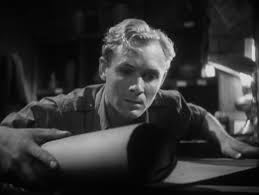
In the film a bumptious Brit reads out the sacred ritual, which his elders advised him not to do, so we knew he would do it, and that precipitates the events that follow. Imotep was consumed by love for Zita but she was an anti-vaxxer and when measles killed her, Immy stole the sacred scroll to re-animate her, but just as he was about to utter…. The cops busted him and he was sentenced to be buried alive or watch the President in Thief talk. He chose burial.
We see the start of his burial when he is being wrapped in linen and it is enough. Whew! (Note no fly was included when he was wrapped and that caused a problem because even mummies have to go.) The scroll he violated is buried with him in an unmarked hole in the ground. The Brits find this and as above, set the ball rolling. Then time passes.
Ardath Bey appears from nowhere a decade later and tells another Brit crew where to dig to find the good stuff. They do and they do. Strangely Arath wants no baksheesh and slips away only to return when all the accoutrements are displayed in the Cairo museum (which Kate has visited). It is an other-worldly portrayal of this leathery man with the posture of a sergeant major and the manners of a European diplomat, yet before whom dogs recoil and a Nubian warrior swoons, that carries the picture.
When Zita appears Ardath is sure she is the reincarnation of his love of three plus millennia before and sets about joining with her. [Down, fraternity brothers, not like that!]
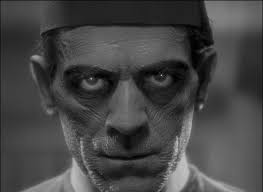
Ardath makes eyes at her as only he can. Move over, Bela. Ardath has an iTV cleverly concealed in a cooling, reflecting pool where he observes others. When senior Brit decides to burn the animating scroll, Ardath, finishes him off with murderous thoughts! Good thing the fraternity brothers cannot do that to the professors who keep failing them for being drunken dolts.
Likewise David Manners, as the hero, is threatened. Zita falls under Ardath’s hypnotic sway and…
The sepulchral atmosphere throughout is suffocating. One almost feels the drying heat and congestion. When the young Brit goes nuts, that seems the right reaction. The lighting and camera use details, like a single eye opening, the dog balking, or Ardath’s glowing stare, to suggest menace. These are silent, static images from which the viewer cannot turn away. Karloff as Ardath manipulates the Brits with ease. The three thousand seven hundred year flashback in the iTV reflecting pool is a movie within a movie worthy W. D. Griffith. Zita is exotic and divided. She is both captivated by Ardath and repelled by him.
She is saved in the end not by Hero but by a direct appeal to the ancient Egyptian gods whom Ardath offended in the first place: Marvellous irony in that. Even when they have finally figured it out the Brits, mighty colonists that they are, cannot stop it.
It was released on 22 December in time for Christmas 1932 in the Great Depression. Karl Freund concentrated on cinematography and shot Metropolis (1927), All Quiet on the Western Front (1930), Dracula (1931), The Good Earth (1937), Tortilla Flat (1942), Key Largo (1948) among many others. He also developed techniques for filming television programs that remain current despite all the technical changes.
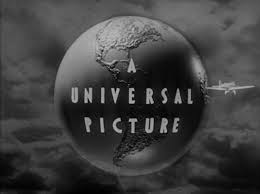
At the time Universal was making Horror its genre of choice with Dracula (1931) and Frankenstein (1931), followed by Island of Lost Souls (1932), and Republicans in the Senate, but these films — apart from the last one — had literary antecedents, whereas The Mummy sprang whole from the screenplay by Nina Putnam. If only she had residual rights to the hundreds of imitations that followed, including some recent egregious examples, she would have been a zillionaire. She was an accountant by day and some say she devised the IRS 1040 tax form when she worked at Treasury. It is still in use, sad to say.

